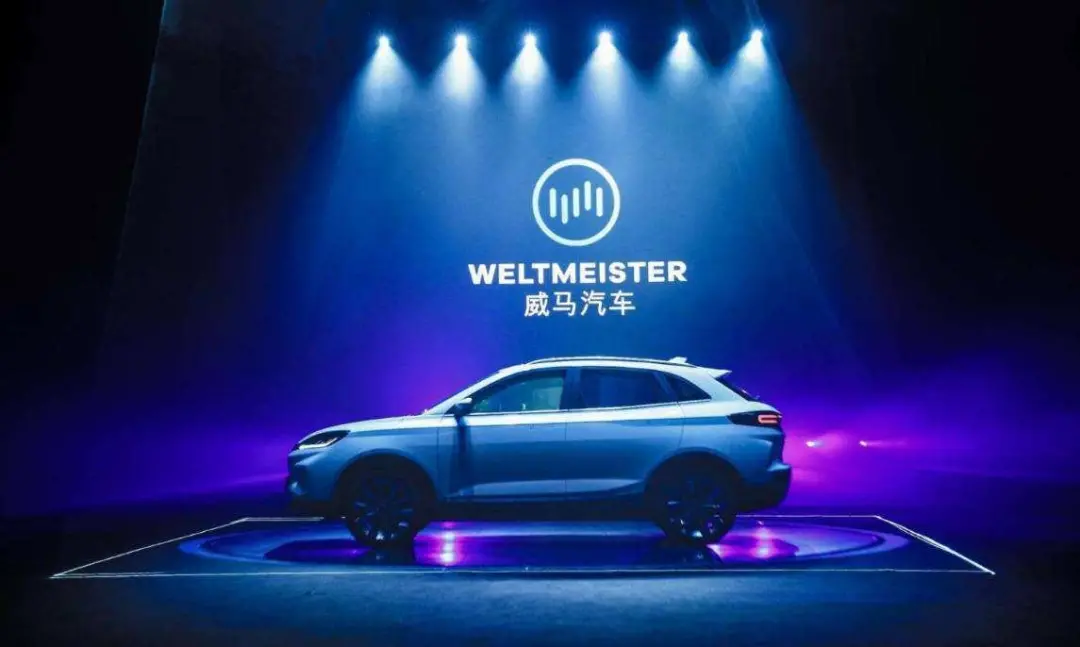Author: Wang Yunpeng
“WmAuto’s monthly sales have been stable at over 3000 units and are approaching the 4000 mark. In the first half of this year, WmAuto’s sales have increased by over 100% year-on-year, and the expected annual sales growth rate is also over 100%,” said Shen Hui, founder, chairman, and CEO of WmAuto Motors, in response to the public’s attention on WmAuto.
At the same time, Shen Hui also mentioned in his response that, like a newly started football game, the new forces of car-making are still far from the stage of winning or losing. Currently, in terms of product and travel market layout, WmAuto Motors is opening the second half of the game at its own pace.
The implication of Shen Hui’s words is obvious, that WmAuto Motors is still steadily moving forward.
However, the sales data show otherwise. According to the China Association of Automobile Manufacturers, WmAuto Motors sold 4007 units in June and a total of 15,665 cars in the first half of the year, based on the data from the China Passenger Car Association. Although the sales volume in June doubled year-on-year and the sales volume in the first half of the year increased by 103.8% year-on-year, compared with the entire new energy vehicle industry and the new forces of car-making such as NIO, XPeng, and Ideal, WmAuto Motors’ sales performance is not outstanding.
According to the data released by the China Association of Automobile Manufacturers, the sales volume of new energy vehicles in China in the first half of this year was 1.206 million units, a year-on-year increase of 201%. At this growth rate, it is estimated that the sales of new energy passenger vehicles in China this year will exceed 2.4 million units. While the performance of the entire market is impressive, the sales of some new car-making forces are also reaching new highs, with NIO delivering 41,956 units, XPeng delivering 30,738 units, Ideal delivering 30,154 units, and even lesser known car-making forces such as NETA and Leapmotor selling more than 20,000 units.
From the horizontal comparison of sales volumes, WmAuto Motors, which used to be in the first camp of new car-making forces, is now not only far behind NIO, XPeng, and Ideal, but also has a significant gap with NETA and Leapmotor, which used to be inconspicuous.
Thus, the industry’s questioning of “whether WmAuto Motors has fallen behind” is not without reason.
Falling out of the top tier
In 2019, Wang Xing, founder of Meituan, said on social media, “The pattern of Chinese car companies is basically a competition among three central state-owned enterprises, three local state-owned enterprises, three private enterprises, and three new forces of car-making: Ideal, NIO, and XPeng.”
In response to Wang Xing’s comments, Shen Hui, not accepting it, replied from afar, stating that “Among the new forces of car-making companies, WmAuto Motors will enter the top three.”
If we go back to 2018, we will find that Shen Hui’s refusal was justified. In April 2018, WmAuto Motors’ first model, the EX5, was officially put into mass production and launched, while at that time, new forces such as NIO, XPeng, and Ideal still only existed on paper or in factories.In 2019, it was the year when many new forces in car industry began to deliver their products to customers. Data showed that in the first quarter of that year, WM Motor delivered 4085 new cars, while NIO, which now has the best sales, delivered only 3989 cars. That is to say, WM not only stood in the same starting line with NIO at the beginning, but also slightly surpassed them.
By the end of 2019, WM Motor, with only one model, EX5, had delivered a total of 16,800 cars, while NIO, with two models, ES8 and ES6, had sold 20,500 cars. XPeng and Li Xiang had only delivered 16,600 and 1,500 cars respectively. At this time, WM Motor was also considered as the “leader” of new forces in car industry.
However, WM’s good luck did not last long. In 2020, the sales of NIO, XPeng and Li Xiang began to speed up. The three new forces in car industry delivered 43,700, 27,000 and 33,500 cars respectively throughout the year. In contrast, WM’s sales growth was weak despite having its second model, EX6, and its total sales throughout the year were 22,500, comprehensively lagging behind NIO, XPeng and Li Xiang.
Enter 2021, the sales gap between WM Motor and NIO, XPeng and Li Xiang has widened further. Data showed that in the first quarter of this year, WM Motor’s sales were only 3,000, and its cumulative sales in the first half of the year were 15,665. By contrast, the cumulative sales of the latter three were 41,956, 30,738, and 30,154 respectively. Among them, NIO achieved 95.9% of its delivery volume last year, Li Xiang achieved 92.43%, and XPeng exceeded its delivery volume in 2020.
While its sales growth began to run out of steam, WM Motor did not stop expanding its sales channels. Public data showed that there are now more than 310 officially operating dealerships of WM Motor across the country. Based on this data, on average, each dealership sold only about 50 new cars in the first half of this year.
“In 2019, the trend of WM was good, and there were relatively few 4S stores. The monthly sales in the store could be maintained at more than 30 cars. However, starting from last year, the sales in the store began to decline. More importantly, WM is constantly expanding the scale of its dealerships, but the overall sales are not going up, leading to lower and lower sales in our store.” said a dealership manager in an interview with the media.More dissatisfied dealers complained about WM Motor’s promise of “order-based sales model without inventory pressure on dealers” that was never fulfilled. “Earlier promised order-based sales model disappeared, and we were asked to prepare inventory, and the inventory pressure has only increased over time. Along with poor sales, we had up to 200 unsold cars at the peak,” some dealers reported.
WM Motor’s Weaknesses
Compared to traditional automakers who have been fighting in the market for many years, the new entrants in the automotive industry have relatively low brand awareness and a more neutral brand image. Therefore, it is crucial for a new brand to position itself in the right market segment with its first vehicle.
So far, new automakers like Tesla, NIO, and Xpeng have adopted a Top-Down strategy, starting with high-end models to establish a premium brand identity and then using low-end models to sweep the market. Tesla, for example, introduced the Model S in 2012, establishing its image as a high-end electric sportscar. After the brand image stabilized, Tesla successfully launched the lower-priced Model 3 in 2016 and gained more market share.
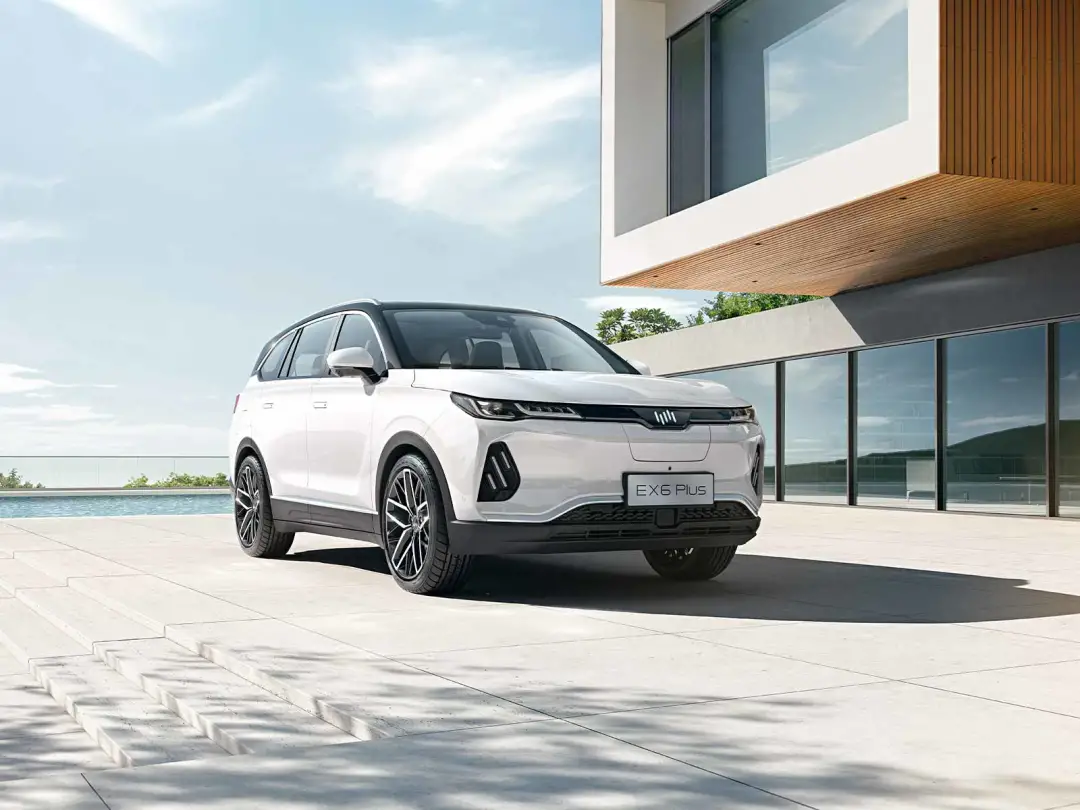
In contrast, WM Motor’s slogan was “creating smart electric vehicles that are affordable and enjoyable for consumers” when it was founded. “We want to make popular cars,” said Shen Hui, WM Motor’s CEO in 2018. In other words, WM Motor’s brand positioning at the outset was “moderate.”
Under this philosophy, WM Motor released its first model, the EX5, selling between RMB 112,300 to 216,300 after subsidies. “Due to its price advantage and lack of a strong competitor, the EX5 sold well in 2018 and 2019. But with the launch of more distinctive high-end and low-end models such as Model 3, ES8, Xpeng One, Wuling Hongguang Mini EV, Ora Black Cat, and Changan Benni EV, EX5, sticking to a conservative and neutral concept, lost its attractiveness,” said an industry insider.
In 2020, even though WM Motor launched the higher-priced EX6 model, the lack of a strong brand image from the EX5 couldn’t support the pricing from RMB 239,900 to 279,900. Publicly available data shows that from May to September 2020, only 259 EX6 vehicles were sold, and WM Motor has not disclosed any detailed sales data since then.
Furthermore, Shen Hui stressed that “WM Motor is not an internet carmaker” at the beginning of entrepreneurship. Similarly, the Vice President of Strategic Planning, Lu Bin, who also came from a traditional automaker, said: “WM Motor is not an internet car company.”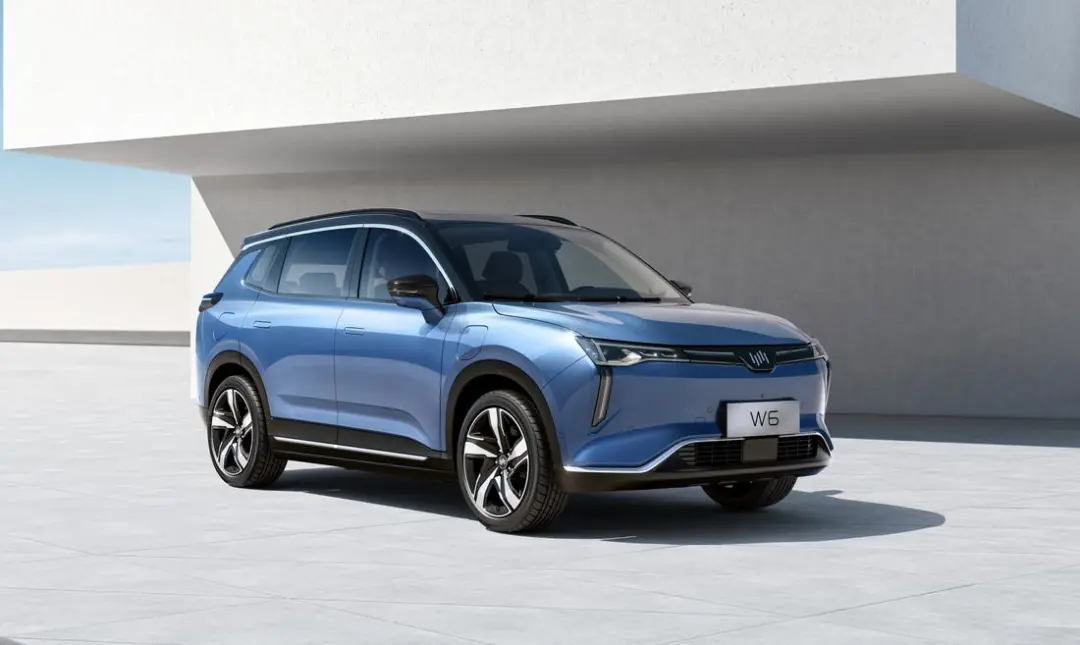
The lack of internet thinking has made the appeal of Shen Hui, the CEO of WM Motor, much lower than that of founders such as Musk, Li Bin, Li Xiang, and He XPeng, and has also prevented WM Motor from forming an online “fan effect” like Tesla and NIO, among other new carmakers. However, the internet is currently the widest flow pool, and the heat obtained online can to some extent be converted into offline sales, but WM Motor, which has a strong “traditional automotive industry heritage”, is clearly not good at this.
“Although it is said to be a new force in car making, WM Motor feels more like a traditional carmaker in terms of channel mode, sales mode, and service mode,” according to some dealers.
At the same time, core technology seems to be another weakness of WM Motor. In April 2018, WM Motor released the “128 Strategy”: based on German technology, mobilize global resources, extend to two vehicle platforms, STD and PL, based on one core architecture, and launch at least eight high-quality mainstream intelligent cars.
However, three years later, WM Motor currently only has the first generation platform and three models: EX5, EX6, and W6. In contrast, XPeng has already used a new platform since the P7, and new platform products for NIO and Ideal also have clear timetables.
Taking autonomous driving technology, the main competition in the future for new carmakers, as an example, NIO, XPeng, and Ideal have all formed their own teams, while WM Motor has chosen to rely on Baidu. What is the geometric benefit, subsequent growth potential, and robustness of this approach of handing over key core technologies to others for WM Motor? It is still a major unknown.
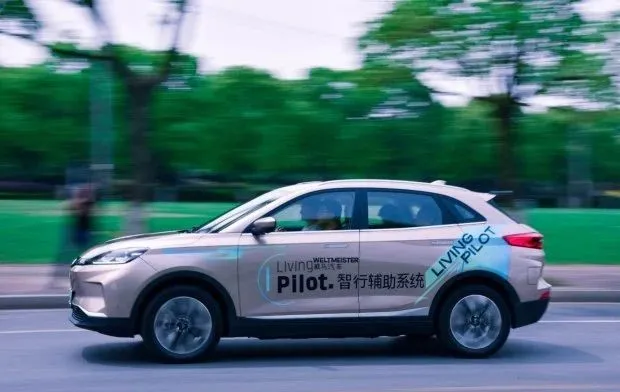
It is worth mentioning that WM Motor, which has no shining points in brand power and core technology, also performs unsatisfactorily in terms of quality control. Public reports show that from September 23 to October 27, 2020, within 35 days, WM Motor had four spontaneous combustion incidents. In order to eliminate potential safety hazards and restore user confidence, it had to urgently initiate a recall plan. Meanwhile, checking third-party quality complaint platforms and major forums also shows that WM owners have criticisms and complaints such as “actual cruising range is low”, “strange smell and noise”, “poor sound insulation and heat insulation effect”, “poor software effect”, “serious safety hazards exist in the power failure during driving”, “the battery design of WM EX5 is flawed”, etc.
Raising funds is the top priority.Going back to 4 years ago, in 2017, WM Motor invested in and established a production base in Wenzhou. In January 2018, WM Motor acquired the production qualification by acquiring Zhongshun Automobile, becoming the fastest and most licensed among the new forces in the car-making industry at that time, thanks to the backing of the start-up team’s background in the host factory and self-built factory model.
Since August 2016 when it started its series A financing until now, WM Motor has conducted at least 7 rounds of financing with a total amount of more than 30 billion yuan. However, the large amount of financing has not improved WM Motor’s “hematopoietic” ability. Data shows that from early 2017 to September 2020, the net profit of WM Motor after deduction for non-recurring gains and losses was -1.696 billion yuan, -2.453 billion yuan, -3.608 billion yuan, and -3.649 billion yuan respectively, with a cumulative loss of about 11.4 billion yuan over the four years.
By comparison, NIO, Ideal, and XPeng not only saw a significant reduction in net loss from 2018 to 2020, but also achieved positive gross profit margins in 2020, reaching 11.52%, 16.38%, and 4.55%, respectively, no longer in the state of losing money on every car sold.
In addition, it is reported that the two smart factories self-built by WM Motor still require a large amount of capital investment. The construction and production of the level-4 smart factory alone will cost about 40 billion yuan, not including expenses such as personnel and equipment depreciation. As of September 2020, its cash and cash equivalents balance only had 4.2 billion yuan left. According to the estimated loss amount in 2020, the 4.2 billion yuan can only support WM Motor to survive this year.
It can be seen that for WM Motor, whose losses continue to escalate, finding money has become a top priority. “After many rounds of financing, going public is the best solution for WM Motor to survive,” said an industry insider.
It is worth mentioning that as a carmaker that achieves mass production earlier among the new forces, WM Motor has been seeking opportunities to go public. On September 30, 2020, WM Motor officially submitted its Sci-Tech Innovation Board IPO counseling filing, with CITIC Securities as its counseling institution, planning to go public on the Sci-Tech Innovation Board earlier this year. However, the spontaneous combustion incident from September to October 2020 has somewhat become an obstacle for its listing.At the end of January 2021, WM Motor completed the counseling for going public. However, just when the outside world thought that the process of WM Motor’s IPO was steadily advancing, on April 15th, news broke out that the IPO on the Sci-Tech Innovation Board was postponed. According to publicly available information, the reason for the postponement was that there were many problems with the IPO materials of WM Motor, and it was criticized for insufficient technological content, low ratio of R&D investment to revenue, and continued losses.
Although Shen Hui came out in a timely manner to clarify the situation and WM Motor responded that the preparations for going public were proceeding in an orderly manner, there is no evidence so far that the work of WM Motor’s IPO is still progressing.
Cui Dongshu, secretary-general of the China Passenger Car Association, said: “If WM Motor enters the Sci-Tech Innovation Board as the first stock of the new energy vehicle manufacturing forces, it can enjoy more ample capital in the capital market, which has a positive impact on the short-term stock price.” But the cruel reality is that without going public, WM Motor, as the first stock of the new energy vehicle manufacturing forces, is missing out on the huge dividend period of new energy vehicles in the capital market in the near future.
In September 2020, after receiving tens of billions of yuan in financing, Shen Hui used the phrase “no way out, a fight to the death” to describe the situation of WM Motor at that time. In fact, Shen Hui’s words still apply today, especially in the case of stagnant sales and expanding losses, WM Motor, which has not yet realized its dream of going public on the Sci-Tech Innovation Board, is still in an unfavorable situation.
Can it still break through? In the industry’s view, the reason why leading new forces such as Tesla, NIO, and XPeng can receive more attention and expectations even though their sales are far lower than those of traditional automakers is that they span both the automobile and technology tracks. In other words, leading software services are also the key points for these new forces to win market attention in addition to constantly improving their automobile manufacturing and sales.
Unfortunately, at present, WM Motor seems to lack both of these points. In terms of car sales, WM Motor has yet to expand its second source of incrementality, and over 90% of its sales and most of its revenue still come from the EX5. Even the newly launched W6 this year may have difficulty becoming a sales representative in the future. Specifically, after subsidies, the selling price of the W6 ranges from 169,800 to 259,800 yuan, with a body length of only 4620 mm and a wheelbase of 2715 mm, which is only 12 mm longer than the EX5, and the main selling model has a range of only 520 km. In terms of these product parameters, the W6 has little advantage compared to the same level of vehicle such as the Guangzhou AIONV, which has a wheelbase of 2830 mm and a NEDC range of 600 km.
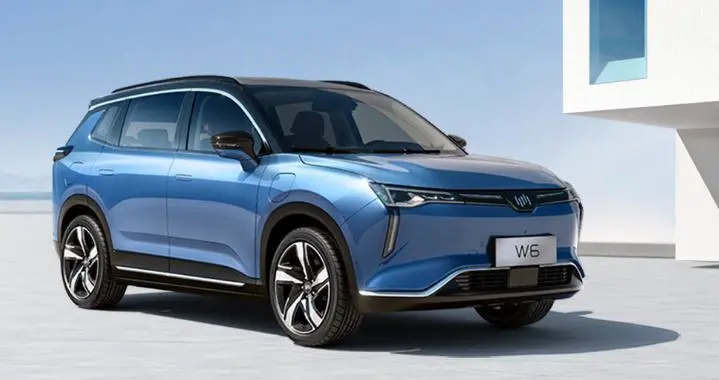 The performance of W6 in terms of sales has been demonstrated at the 2021 Shanghai Auto Show. WM Motor claimed that the orders for W6 exceeded 6,000 within 50 hours; however, public data showed that only 973 units were sold in April and 746 in June. “Competition in the new energy vehicle market has become fierce, and the pace of market introduction is accelerating. Once W6 performs poorly, it will be difficult for WM Motor to win the ticket to the next high-end electric vehicle competition,” said industry analyst Lin Yong.
The performance of W6 in terms of sales has been demonstrated at the 2021 Shanghai Auto Show. WM Motor claimed that the orders for W6 exceeded 6,000 within 50 hours; however, public data showed that only 973 units were sold in April and 746 in June. “Competition in the new energy vehicle market has become fierce, and the pace of market introduction is accelerating. Once W6 performs poorly, it will be difficult for WM Motor to win the ticket to the next high-end electric vehicle competition,” said industry analyst Lin Yong.
Regarding the software services that account for the highest proportion of autonomous driving, WM Motor has no bright spots compared to NIO, which released the “full-stack self-developed” NAD autonomous driving solution at NIODay 2020. Taking W6 launched this year as an example, WM Motor claimed that it achieved Level 4 autonomous driving when this car was launched, while in fact, the “Level 4 autonomous driving” for W6 refers more to the unmanned parking system, which is an “upgraded automatic parking” feature.
Meanwhile, public reports showed that WM Motor and Baidu signed a non-competition agreement, limiting WM Motor to using Baidu’s Apollo autonomous driving system instead of developing their own autonomous driving technology. However, the situation is rather awkward since Baidu also invested in NIO and formed its own smart car company, Jidu Auto, with Geely Auto on January 11 this year, thus weakening the industry’s imagination of WM Motor.
In order to get out of the current predicament, WM Motor is speeding up its deployment. It is reported that WM Motor will launch its first intelligent pure electric sedan M7 in the second half of this year. The new car will be equipped with multiple lidar sensors with a computing power of 500-1000 TOPS. By 2030, the mainstream domestic market segment will occupy about 60% of the market share. It is expected that the penetration rate of mainstream new energy vehicles priced from 150,000 to 250,000 yuan will increase from 3% to 40% in the next decade. At that time, WM Motor, which has a dual lineup of “sedan + SUV,” will “fight on its home ground,” said Shen Hui.
In addition, WM Motor is also looking for incremental opportunities in the travel market. It is known that WM Motor has three major series, W, M, and E, where SUVs are under the W series, sedans are under the M series, targeting individual customers with the oval-logo, and the E series focuses on the shared travel market with the round-bordered logo.
Although WM Motor is accelerating its deployment, the future may not be as bright as Shen Hui expected. Taking the sedan market, which Shen Hui is more confident about, as an example, NIO and XPeng have already laid out their plans. XPeng has launched P7, and P5 has also been unveiled, while NIO will deliver ET7 next year.In addition, WM Motor is not only facing competition from new carmakers, but also from traditional car companies that are rapidly transforming themselves, as well as from “new new forces” such as Baidu, Xiaomi, and Apple that have already exited the market.
Faced with the current challenges, only time will tell if WM Motor has the ability to participate in the “rising and falling, pulling and tearing” of the future market.
This article is a translation by ChatGPT of a Chinese report from 42HOW. If you have any questions about it, please email bd@42how.com.
